As the automotive market continues to evolve, consumers are increasingly faced with choosing between versatile SUVs and practical hatchbacks. In the latest showdown, we explore the Mazda CX-30 and the VW Golf, two models that have carved their niches in the compact car segment. While both vehicles are designed for the modern driver, their approaches to style, performance, and technology set them apart.
Mazda CX-30 vs VW Golf – Which model is better for everyday use?
Both models have their strengths – but which one suits you more?
Compare performance, efficiency, price and space directly: Mazda CX-30 or VW Golf?
Design and Dimensions
The Mazda CX-30 showcases a sleek and muscular SUV design that reflects Mazda's Kodo design philosophy. With an overall length of 4,395 mm, width of 1,795 mm, and height of 1,540 mm, it offers a commanding presence on the road. In contrast, the VW Golf, a traditional hatchback, measures approximately 4,282 mm to 4,292 mm in length, with a width of 1,789 mm and a height ranging from 1,456 mm to 1,483 mm. The Golf's design emphasizes practicality and aerodynamics, appealing to those who value function alongside style.
Performance: Engine and Transmission
Under the hood, the CX-30 boasts a range of petrol MHEV options, producing between 140 and 186 HP, with a torque of 240 Nm. This power comes from a 2.0-litre engine, offering an acceleration of 0-100 km/h in approximately 8.3 to 10.3 seconds, depending on the variant. The CX-30 is available with both manual and automatic transmission, and consumers can choose between front-wheel drive (FWD) and all-wheel drive (AWD), providing flexibility based on driving conditions.
The VW Golf, on the other hand, offers a more diverse engine lineup that includes petrol, diesel, and plug-in hybrid variants, with power outputs ranging from 116 HP to an impressive 333 HP from its performance-focused models. Acceleration times can be as low as 4.6 seconds for the high-performance versions, thanks to its efficient dual-clutch automatic transmission. Golf's range of engine options allows it to appeal to both eco-conscious drivers and those looking for spirited performance.
Fuel Efficiency and Emissions
Fuel efficiency is a critical consideration for many buyers today. The CX-30 records consumption figures between 5.7 to 6.6 L/100km, with CO2 emissions ranging from 129 to 148 g/km. In comparison, the VW Golf outshines in this department, with consumption as low as 4.3 L/100km and CO2 emissions starting from 113 g/km, particularly impressive in its hybrid configurations. Both models are equipped to appeal to environmentally conscious individuals but the Golf clearly takes the lead in efficiency.
Interior Amenities and Technology
When it comes to interior features, both the CX-30 and Golf provide comfortable accommodations for up to five passengers. The CX-30 boasts 430 liters of trunk capacity, which is advantageous for those needing space for luggage or other gear. The design focuses on high-quality materials and an intuitive infotainment system.
The VW Golf, while slightly lower in trunk space at 381 liters, counters with a user-friendly digital cockpit and several tech innovations like advanced connectivity options and driver-assistance systems. The integration of VW's latest MIB3 infotainment system offers seamless smartphone integration, ensuring a modern driving experience.
Safety Features and Ratings
Safety is paramount for both automakers. The CX-30 comes equipped with a suite of advanced safety features, including adaptive cruise control, lane-keeping assist, and automated emergency braking. These technologies are designed to protect occupants and enhance driver confidence.
The Golf also emphasizes safety, offering similar features while benefiting from VW’s robust reputation in crash testing. Both vehicles have demonstrated strong safety ratings, providing peace of mind for families and individual drivers alike.
Final Verdict
In the battle between the Mazda CX-30 and VW Golf, the choice ultimately depends on the buyer's preferences. For those looking for a stylish SUV with ample cargo space and a smooth driving experience, the CX-30 is a great choice. Conversely, for drivers who prioritize performance, fuel efficiency, and cutting-edge technology in a compact hatchback, the VW Golf remains a formidable contender.
Both vehicles represent the best of their respective categories, each bringing unique strengths that cater to diverse consumer needs. Whether you lean towards the sleek versatility of the CX-30 or the dynamic capabilities of the Golf, one thing is clear: both options promise a rewarding driving experience.
Here’s where it gets real: The technical differences in detail
Costs and Efficiency:
Looking at overall running costs, both models reveal some interesting differences in everyday economy.
VW Golf has a barely noticeable advantage in terms of price – it starts at 25200 £, while the Mazda CX-30 costs 25200 £. That’s a price difference of around 39 £.
Fuel consumption also shows a difference: VW Golf manages with 1.10 L and is therefore convincingly more efficient than the Mazda CX-30 with 5.70 L. The difference is about 4.60 L per 100 km.
Engine and Performance:
Power, torque and acceleration are the classic benchmarks for car enthusiasts – and here, some clear differences start to show.
When it comes to engine power, the VW Golf has a convincingly edge – offering 333 HP compared to 186 HP. That’s roughly 147 HP more horsepower.
In acceleration from 0 to 100 km/h, the VW Golf is clearly quicker – completing the sprint in 4.60 s, while the Mazda CX-30 takes 8.30 s. That’s about 3.70 s faster.
In terms of top speed, the VW Golf performs distinct better – reaching 270 km/h, while the Mazda CX-30 tops out at 204 km/h. The difference is around 66 km/h.
There’s also a difference in torque: VW Golf pulls significantly stronger with 420 Nm compared to 240 Nm. That’s about 180 Nm difference.
Space and Everyday Use:
Whether family car or daily driver – which one offers more room, flexibility and comfort?
Both vehicles offer seating for 5 people.
In curb weight, VW Golf is a bit lighter – 1307 kg compared to 1455 kg. The difference is around 148 kg.
In terms of boot space, the Mazda CX-30 offers to a small extent more room – 430 L compared to 381 L. That’s a difference of about 49 L.
In maximum load capacity, the Mazda CX-30 performs slightly better – up to 1406 L, which is about 169 L more than the VW Golf.
When it comes to payload, VW Golf minimal takes the win – 508 kg compared to 496 kg. That’s a difference of about 12 kg.
Who comes out on top?
Overall, the VW Golf shows itself to be outperforms in nearly all aspects and secures the title of DriveDuel Champion.
It convinces with the more balanced overall package and proves to be the more versatile choice for everyday use.
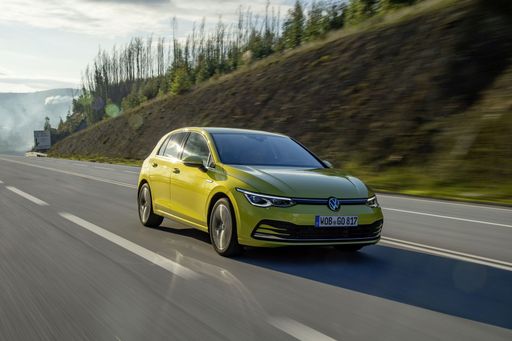 @ Volkswagen AG / VW Media
@ Volkswagen AG / VW Media
VW Golf
Mazda CX-30
The Mazda CX-30 blends sleek coupe-like lines with the practicality of a compact crossover, feeling more premium than its price tag suggests. It’s a joy to drive for anyone who likes a taut chassis and an interior that treats daily commutes like a small luxury escape.
details @ Mazda Motor Corporation
@ Mazda Motor Corporation
 @ Mazda Motor Corporation
@ Mazda Motor Corporation
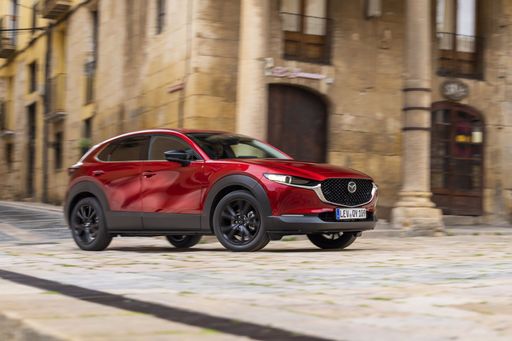 @ Mazda Motor Corporation
@ Mazda Motor Corporation
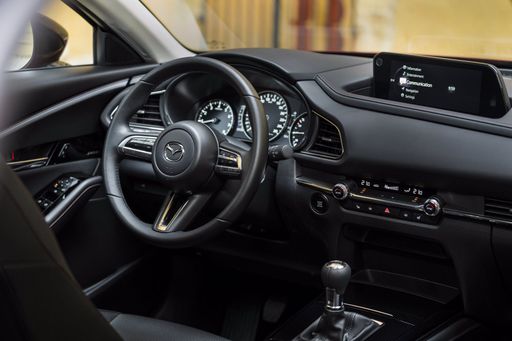 @ Mazda Motor Corporation
@ Mazda Motor Corporation
VW Golf
The VW Golf remains the everyman’s favourite — cleverly balanced, composed and just posh enough to feel grown-up without pretending to be something it’s not. It slips through town and eats up longer trips with a refined cabin, practical layout and a kindly, capable character that turns everyday driving into something a little bit special.
details @ Volkswagen AG / VW Media
@ Volkswagen AG / VW Media
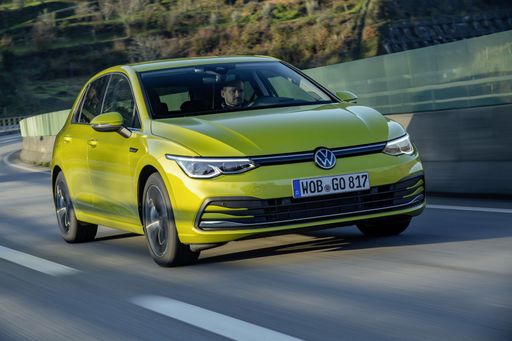 @ Volkswagen AG / VW Media
@ Volkswagen AG / VW Media
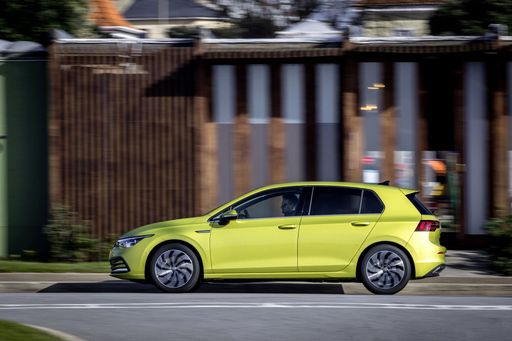 @ Volkswagen AG / VW Media
@ Volkswagen AG / VW Media
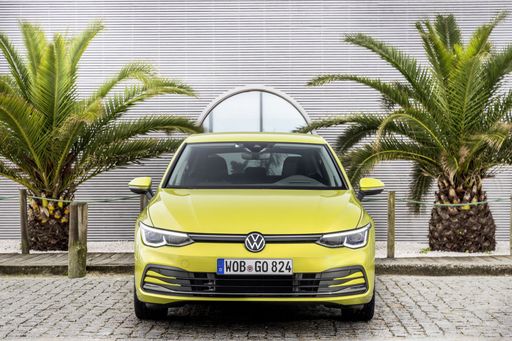 @ Volkswagen AG / VW Media
@ Volkswagen AG / VW Media
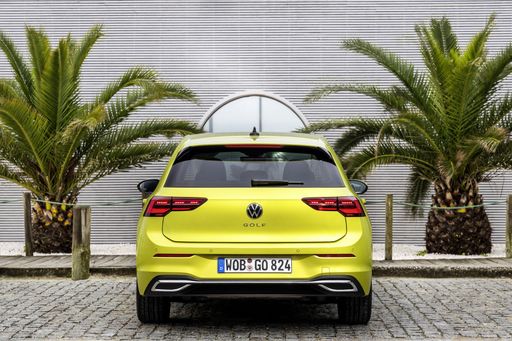 @ Volkswagen AG / VW Media
@ Volkswagen AG / VW Media
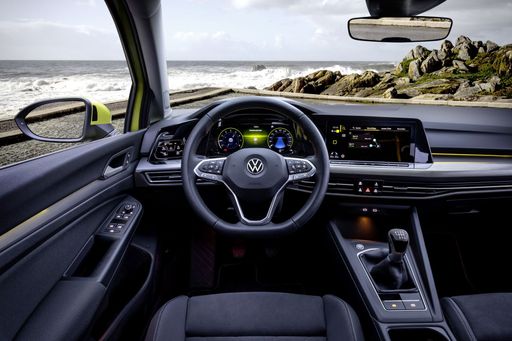 @ Volkswagen AG / VW Media
@ Volkswagen AG / VW Media
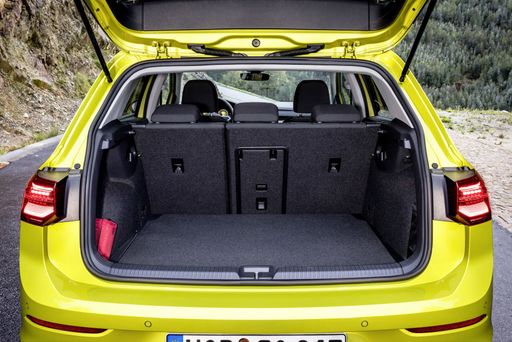 @ Volkswagen AG / VW Media
@ Volkswagen AG / VW Media
 @ Mazda Motor Corporation
@ Mazda Motor Corporation
|
 @ Volkswagen AG / VW Media
@ Volkswagen AG / VW Media
|
|
|
|
Costs and Consumption |
|
|---|---|
|
Price
25200 - 36800 £
|
Price
25200 - 47600 £
|
|
Consumption L/100km
5.7 - 6.6 L
|
Consumption L/100km
1.1 - 8.1 L
|
|
Consumption kWh/100km
-
|
Consumption kWh/100km
-
|
|
Electric Range
-
|
Electric Range
131 - 143 km
|
|
Battery Capacity
-
|
Battery Capacity
19.70 kWh
|
|
co2
129 - 148 g/km
|
co2
25 - 184 g/km
|
|
Fuel tank capacity
48 - 51 L
|
Fuel tank capacity
40 - 55 L
|
Dimensions and Body |
|
|---|---|
|
Body Type
SUV
|
Body Type
Hatchback
|
|
Seats
5
|
Seats
5
|
|
Doors
5
|
Doors
5
|
|
Curb weight
1455 - 1587 kg
|
Curb weight
1307 - 1662 kg
|
|
Trunk capacity
422 - 430 L
|
Trunk capacity
273 - 381 L
|
|
Length
4395 mm
|
Length
4282 - 4296 mm
|
|
Width
1795 mm
|
Width
1789 mm
|
|
Height
1540 mm
|
Height
1454 - 1483 mm
|
|
Max trunk capacity
1398 - 1406 L
|
Max trunk capacity
1129 - 1237 L
|
|
Payload
458 - 496 kg
|
Payload
438 - 508 kg
|
Engine and Performance |
|
|---|---|
|
Engine Type
Petrol MHEV
|
Engine Type
Petrol MHEV, Petrol, Diesel, Plugin Hybrid
|
|
Transmission
Manuel, Automatic
|
Transmission
Automatic, Manuel
|
|
Transmission Detail
Manual Gearbox, Automatic Gearbox
|
Transmission Detail
Dual-Clutch Automatic, Manual Gearbox
|
|
Drive Type
Front-Wheel Drive, All-Wheel Drive
|
Drive Type
Front-Wheel Drive, All-Wheel Drive
|
|
Power HP
140 - 186 HP
|
Power HP
116 - 333 HP
|
|
Acceleration 0-100km/h
8.3 - 10.3 s
|
Acceleration 0-100km/h
4.6 - 10.2 s
|
|
Max Speed
191 - 204 km/h
|
Max Speed
202 - 270 km/h
|
|
Torque
238 - 240 Nm
|
Torque
220 - 420 Nm
|
|
Number of Cylinders
4
|
Number of Cylinders
4
|
|
Power kW
103 - 137 kW
|
Power kW
85 - 245 kW
|
|
Engine capacity
1998 - 2488 cm3
|
Engine capacity
1498 - 1984 cm3
|
General |
|
|---|---|
|
Model Year
2025
|
Model Year
2024 - 2025
|
|
CO2 Efficiency Class
D, E
|
CO2 Efficiency Class
D, F, G, C, B
|
|
Brand
Mazda
|
Brand
VW
|
What drive types are available for the Mazda CX-30?
The Mazda CX-30 is offered with Front-Wheel Drive or All-Wheel Drive.
The prices and data displayed are estimates based on German list prices and may vary by country. This information is not legally binding.
